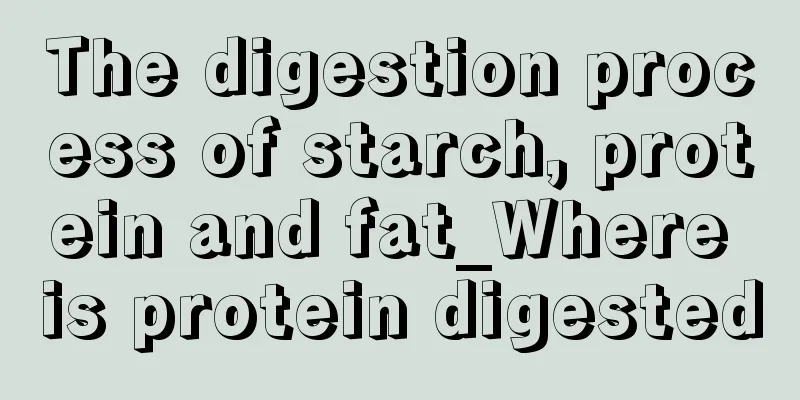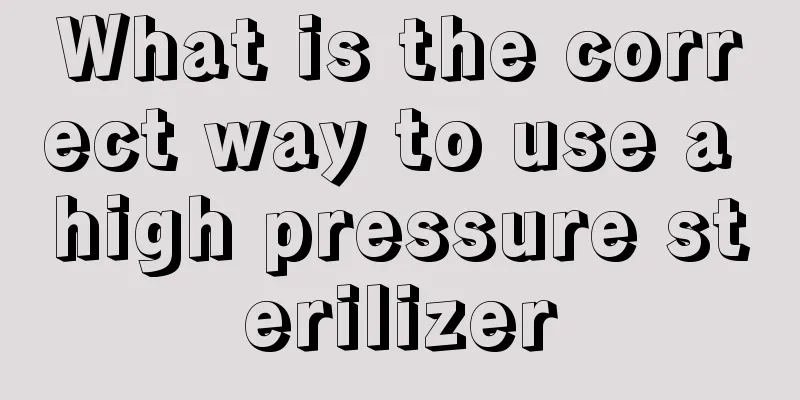The digestion process of starch, protein and fat_Where is protein digested

|
Many of the foods we consume on a daily basis are rich in protein, fat, starch, etc., which are very necessary for maintaining human health. If the human body lacks nutrients such as starch and protein, the immunity will decrease and the physical condition will deteriorate. These nutrients will be broken down and absorbed in the human body. So, what is the digestion process of starch, protein and fat? Diet provides the human body with various types of proteins, which are broken down into amino acids through the combined action of various enzymes in the gastrointestinal tract. The digestion process of protein in the gastrointestinal tract is as follows: After food protein is heated in the mouth and enters the stomach, the gastric mucosa secretes gastrin, which stimulates the luminal cells of the gastric glands to secrete hydrochloric acid and the chief cells to secrete pepsinogen. Inactive pepsinogen is converted into pepsin upon activation. Pepsin hydrolyzes food proteins into polypeptide fragments of varying sizes, which flow into the small intestine with the chyme, triggering the small intestine to secrete secretin. Secretin stimulates the pancreas to secrete bicarbonate into the small intestine to neutralize hydrochloric acid in the stomach contents. The pH value is around 7.0. At the same time, the duodenum in the upper small intestine releases intestinal pancreatic enzyme peptides to stimulate the pancreas to secrete a series of zymogens, including trypsinogen, chymosinogen and carboxypeptidaseogen. In the duodenum, trypsinogen is converted into active trypsin by enterokinase secreted by intestinal cells, which catalyzes the activation of other trypsinogens. These trypsin enzymes hydrolyze the peptide fragment mixture into shorter peptides individually. The short peptides generated in the small intestine are degraded from the C-terminus of the peptide by carboxypeptidase and from the N-terminus by aminopeptidase. Through the combined catalysis of multiple enzymes, the protein in the chyme is degraded into a mixture of amino acids (or amino acids and small peptides), which are then absorbed into the body by the intestinal mucosal epithelial cells. Free amino acids enter the blood circulation and enter the human body. The absorption of amino acids is an energy-consuming process. Natural amino acids contain an α-amino group and a carboxyl group, and the metabolism of amino acids generally includes two aspects: deamination and decarboxylation. Deamination is the main metabolic pathway. Enzymes are the main tools for digestion and absorption. If your farts are smelly, it means that you are not digesting protein properly. It is necessary to appropriately supplement relevant enzymes or probiotics that aid digestion and absorption. |
<<: What to eat to digest zongzi
>>: Is rice porridge easy to digest?
Recommend
The higher the immunity, the better
"Improving immunity can keep you away from d...
What should I pay attention to during gastric insufflation examination
Gastric insufflation test is mainly used to detec...
The harm of iodine 131 to others
Povidone-iodine is a disinfectant we often use, b...
What should patients with fibroids pay attention to in their diet
What should patients with fibroids pay attention ...
What is the time for 450 degree myopia
Although many people suffer from myopia in modern...
Codonopsis pilosula, Radix Ophiopogonis and lean meat soup
The three medicinal herbs, Codonopsis pilosula, O...
Is it true that cancer-sniffing dogs can smell bladder cancer? What tests are needed for bladder cancer?
How to diagnose cancer as early as possible has a...
Can pumpkin seeds be eaten with the skin?
Pumpkin seeds are a common snack food, and many p...
What are the hazards of vanadium to human body
In daily life, I believe that many friends who li...
What are the treatment principles for lung cancer? Summary of effective methods for treating lung cancer
There are many considerations in the treatment of...
What food is better to eat when you have blisters on your mouth
When facing the problem of blisters in the mouth,...
What are the folk remedies for constipation
Although constipation is not a serious disease, w...
Brain cancer patients suffering from insomnia after surgery can use diet therapy to recuperate
After brain cancer surgery, the central nervous s...
What drugs are used to control early lymphoma
Lymphoma is a malignant tumor that originates in ...
What are the symptoms of a fractured knee
Knee bone fracture is actually the most common ty...









